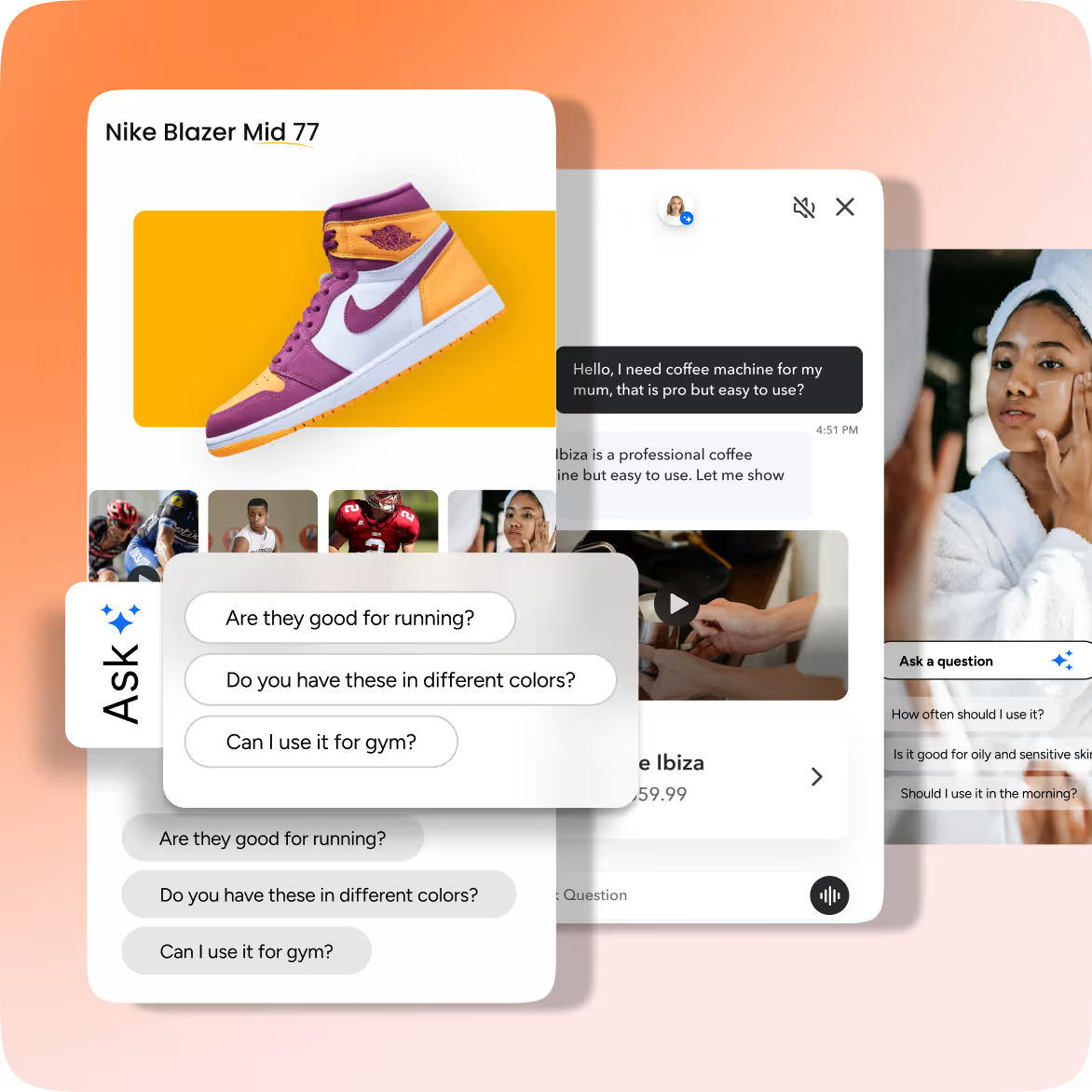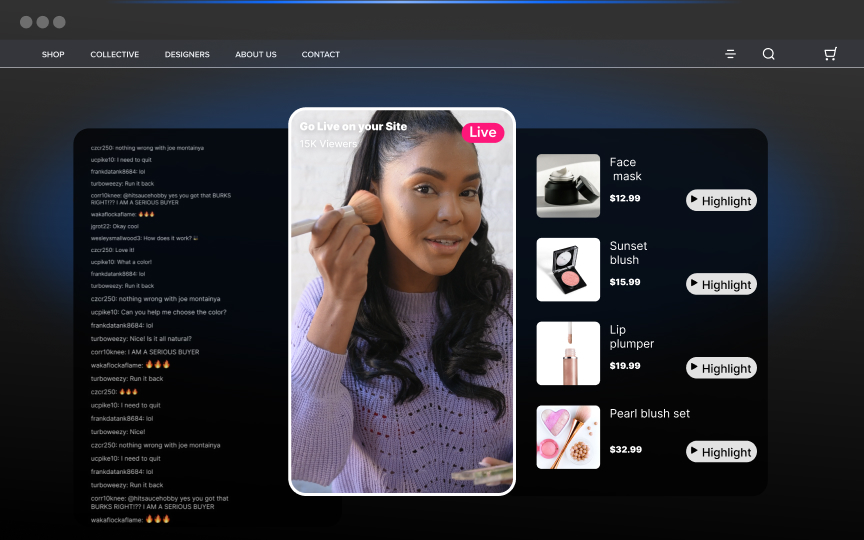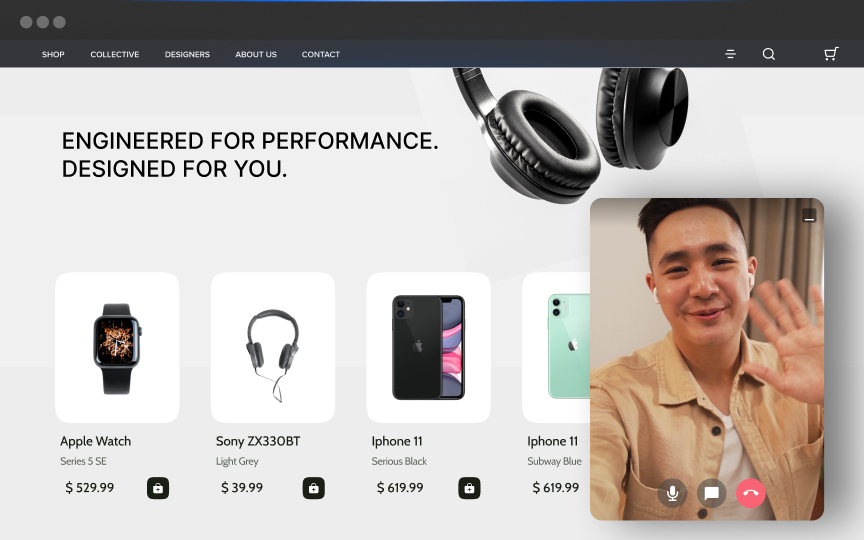Social shopping platforms are not just a trend—they are transforming the online retail landscape. This shift from traditional e-commerce to social commerce is reshaping how brands connect with consumers, leveraging social media's reach to facilitate interactive and seamless shopping experiences.
With the integration of shopping functionalities directly into these social shopping platforms, brands are now able to reach their audience where they are most engaged.
What are Social Shopping Platforms?
Social shopping platforms, also known as social commerce platforms, are a fusion of social media interaction and e-commerce. They allow consumers to discover, share, and purchase products within their social media environments.
By combining the community-driven nature of social platforms with the convenience of online shopping, these platforms create immersive shopping experiences. This approach not only aids in product discovery but also enhances consumer trust through social interactions like peer reviews and influencer endorsements.
Benefits of Social Shopping Platforms
The benefits of social commerce are vast. Here are some of the main ones:
Enhanced Customer Engagement Through Interactive Shopping Experiences
Social shopping platforms significantly boost customer engagement by offering immersive shopping experiences through interactive shopping features, highlighting the conversational commerce benefits. These platforms often incorporate features such as polls, quizzes, and live streams, transforming the shopping journey into an engaging, community-oriented activity rather than a mere transaction.
For instance, customers can participate in real-time chat during live streams, interacting directly with brands and other consumers, combining digital and physical elements to create digital customer experiences.
Technologies such as AI in enhancing customer experience further support these interactive shopping experiences.
Streamlined Purchasing Process Within Social Media Environments
Social shopping platforms streamline the purchasing process by enabling customers to complete transactions directly within social media apps. Integrate shopping functions like,
- Shoppable posts
- In-app checkout systems
- In-video checkout solutions
These platforms reduce the friction often associated with traditional online shopping. Users no longer need to transition between different sites or apps to make purchases, which simplifies the buying journey and greatly reduces cart abandonment rates.
Increased Brand Visibility and Reach via Social Sharing
Brands utilizing social shopping platforms benefit from increased visibility and expanded reach due to the social sharing capabilities of these networks. When customers share their shopping experiences, it acts as an organic endorsement.
Social media algorithms that prioritize shared content can further amplify this effect, making it particularly beneficial for smaller brands looking to gain traction in competitive markets.
Top 7 Leading Social Shopping Platforms
1. Instagram Shopping
Instagram Shopping provides a seamless in-app shopping experience, enabling brands to engage users through shoppable posts and stories. Integration with product catalogs ensures accurate inventory management and real-time updates.
- Shoppable Posts & Stories: Users can tap on images/videos to view product details, driving engagement and impulse buying.
- Product Catalog Integration: Syncs with Facebook’s Commerce Manager, ensuring accurate product listings across platforms.
2. Facebook Shops
Facebook Shops offers customizable storefronts that integrate with Instagram, enhancing cross-platform commerce. It provides advanced targeting and community engagement tools to drive conversions.
- Customizable Storefronts: Brands can personalize their digital stores with templates for a tailored shopping experience.
- Instagram Integration: Shared inventory and cross-promotion enhance reach and streamline social commerce management.
3. TikTok Shopping
As a rapidly growing social shopping platform, TikTok allows brands to create engaging content that integrates product showcases, tapping into TikTok's highly active user base. This approach allows businesses to connect with younger audiences and leverage viral trends, enhancing brand awareness and increasing engagement on TikTok.
- In-App Product Showcases: Products are embedded in videos, driving exposure and encouraging quick purchases.
- Influencer Collaborations: Trusted creators promote products authentically, influencing purchase decisions.
4. Pinterest Shopping
Pinterest Shopping connects users' inspiration with tangible products, providing a visually driven social shopping platform for exploration and purchase. Businesses gain access to motivated consumers who are actively seeking creative ideas, benefiting from potential sales growth driven by Pinterest's discovery-oriented environment.
- Shoppable Pins: Integrates product info within pins, simplifying the transition from browsing to purchasing.
- Visual Search: Uses AI to match images with available products, boosting product discoverability.
5. Snapchat Shopping
Snapchat Shopping redefines the shopping experience with its immersive features, such as augmented reality try-ons and shoppable ads, positioning itself as an innovative social shopping platform. These innovative tools provide brands with opportunities to engage a tech-savvy audience and drive sales through interactive and captivating content.
- AR Try-On Features: Users virtually test products, increasing confidence and reducing return rates.
- Shoppable Ads: Integrated shoppable content, such as ads, make purchases seamless and engaging for younger demographics.
6. YouTube Shopping
YouTube Shopping merges entertainment and commerce by integrating shopping features directly into video content. As one of the largest video-sharing platforms, YouTube provides brands with the opportunity to showcase products in an informative and engaging manner, reaching a vast global audience.
- Integrated Shopping Links: Viewers can shop directly from videos, i.e., YouTube shoppable videos, creating an interactive buying journey.
- Creator Partnerships: Sponsored content and the Merchandise Shelf enhance product visibility and credibility.
7. WeChat Shopping
WeChat Shopping offers a comprehensive social commerce experience within China's most popular messaging app. With its extensive range of features, WeChat allows brands to connect with consumers through messaging, payments, and integrated e-commerce functionalities.
- Mini Programs: Lightweight apps within WeChat allow brands to create custom storefronts and services.
- Personalized Messaging: Brands engage customers with tailored recommendations and direct support.
Strategies for Businesses to Leverage Social Shopping Platforms
Create Engaging, Shoppable Content
Visually appealing, interactive content is essential for capturing customer attention. Utilize shoppable posts and videos on Instagram, Facebook, and TikTok, integrating clear calls-to-action to streamline the purchasing journey. High-quality visuals paired with an effective video marketing strategy and in-app shopping features can significantly boost conversion rates.
Leverage User-Generated Content (UGC)
UGC builds trust and authenticity, influencing 90% of consumers' purchasing decisions. Encourage customers to share their experiences through branded hashtags or incentivized campaigns. Authentic social proof fosters community engagement and enhances credibility.
Collaborate with Influencers
Partnering with influencers expands the brand reach and drives conversions. Micro-influencers, in particular, cultivate strong audience trust, making them valuable for promoting shoppable posts or live shopping events. Their authentic content seamlessly transitions followers from discovery to purchase.
Optimize Sales with Analytics
Data-driven decisions enhance social commerce success. Analyze click-through rates, conversion metrics, and audience behavior to refine marketing strategies. Regularly adjusting tactics based on insights ensures continuous growth and improved ROI.
Implement AI-Powered Personalization
AI-driven recommendations enhance customer experiences by suggesting relevant products based on user behavior. Personalized shopping experiences increase engagement, reduce decision fatigue, and boost sales by catering to individual preferences.
Future Trends in Social Shopping
Growth of Live Shopping Events
Live shopping is revolutionizing social commerce by creating real-time interactions between brands and consumers. You can also see the latest social commerce examples to find inspiration.
Events like those hosted by top streamers have attracted millions of viewers and generated instant sales. Businesses can leverage live streaming on platforms like Instagram and TikTok to drive engagement, encourage impulse buying, and build authentic consumer connections.
Increased Use of AR & VR in Shopping
Augmented Reality (AR) and Virtual Reality (VR) enhance online shopping by allowing customers to visualize products in real-world settings, reducing return rates and boosting confidence. With 48% of marketers planning to adopt AR/VR, businesses can stand out by offering immersive and interactive shopping experiences.
Expansion of In-App Purchasing Features
Social platforms like Instagram and Pinterest are enhancing in-app purchasing, making social shopping seamless and frictionless. Brands should optimize their presence by integrating product catalogs and facilitating direct purchases to capitalize on growing consumer demand for convenience.
These trends highlight the ongoing evolution of social shopping, emphasizing interactivity, personalization, and convenience as key drivers of future ecommerce growth.
Conclusion
Social shopping platforms are fundamentally transforming e-commerce by weaving social media interactions seamlessly into the online shopping process. These platforms enable businesses to engage customers more effectively through user-generated content, personalized recommendations, and direct communication, thereby fostering deeper emotional connections.
As businesses leverage these platforms to interact with over 91% of American social media users, the potential for reach and engagement is vast. Amidst this evolution, companies should embrace and innovate within this space to enhance customer engagement and drive sales, ensuring they remain competitive and relevant in a rapidly changing digital landscape.
FAQs
What is a social shopping platform?
A social shopping platform is an online marketplace that integrates social media features, allowing users to discover, share, and purchase products within a social environment. Examples include Instagram Shops, TikTok Shop, and Facebook Marketplace.
What is the most popular platform for social media shopping?
The most popular platform for social media shopping is Instagram, followed by TikTok and Facebook, as they offer seamless in-app shopping experiences with shoppable posts, live shopping, and influencer marketing.
What is an example of social shopping?
An example of social shopping is TikTok Shop, where users can buy products directly through videos, live streams, and creator recommendations without leaving the app.
What are the 3 top social media platforms?
The top three social media platforms are Facebook, YouTube, and Instagram, based on user engagement, active users, and influence in digital marketing.
Unlock Exclusive Insights
By submitting this form, you agree to Firework's privacy policy and consent to receive personalized marketing communications. You can unsubscribe at any time.





























